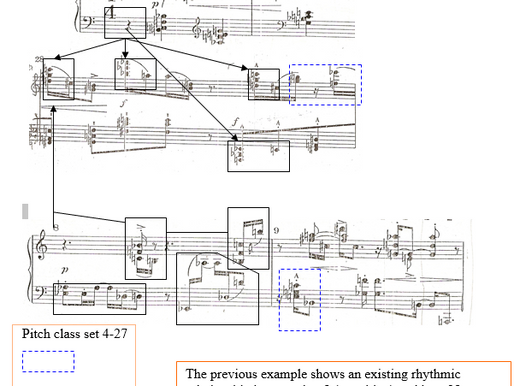Uncategorized
Analysis of Klavierstücke Op. 33 a by A. Schoenberg – Part I
Having as premises the definitions of development made by J. Zamacois in his book “Course of musical forms” and Charles Rosen in “Sonata Forms” I will make a comparison between them and the analysis of the piece detailed to support the affirmation of the existence of a development located between bars 27 and 32 of the same piece, Op.33 A by Schoenberg.
I will divide this article in two, delivering the first part in which we clarify what consists a development according to these two scholars; and the second part will go in detail through all the layers of the composition: Melody, Sound, Rhythm, Harmony and Growth. (Note: the latter analytical method is taken from Jan LaRue’s “Guidelines for Style Analysis“).
– Zamacois states (page 176):
Development structure:
1-The structure and tonal process are absolutely free.
2-The composer uses those elements of the Exhibition that he considers appropriate, and fragmenting them, modifying them rhythmically, melodically or modally, amplifying them, reducing them, imitating or superimposing them, giving them a new life.
3-[…] Of something must flee: To repeat tonal states and formulas already used in the exhibition. If a theme is repeated in the same tone, it should be with another harmonization and vice versa.
4-The thematic elements presented in the Exposition are not exclusively the ones that intervene in the Development […] sometimes, some of these new elements are not limited to a secondary role, but they go on to play less than the main one of the Development.
– Charles Rosen states (p.275):
The word development has two meanings that overlap partly: it indicates, on the one hand, the “middle” section of a sonata, and on the other a series of thematic transformation techniques. These are:
1- Fragmentation, deformation, use of themes (or fragments) within a contrapuntal imitative texture and transposition and adaptation in a rapid modulating sequence.
2-The texture given by the motivic development is characterized by shorter periods than the beginning of the exhibition […] and the harmonic movement or rhythm is faster.
3-The middle section of a sonata form has two separate functions, the development and the retransition functions: the development intensifies the polarization and delays the resolution; the retransition prepares the resolution.
– Regarding Zamacois, the comparison with the Schoenberg piece offers the following conclusions:
1-. The structure given in the central section (bars 27 and 32) presents an elaboration and structure given by processes carried out on the thematic elements of the exhibition (a point that will be detailed throughout the analysis) as it happens in the so-called Classical Sonata Form.
2-. The thematic treatment obeys mainly to the elements of the first two bars; bars 27/28 begins with the development of the same:
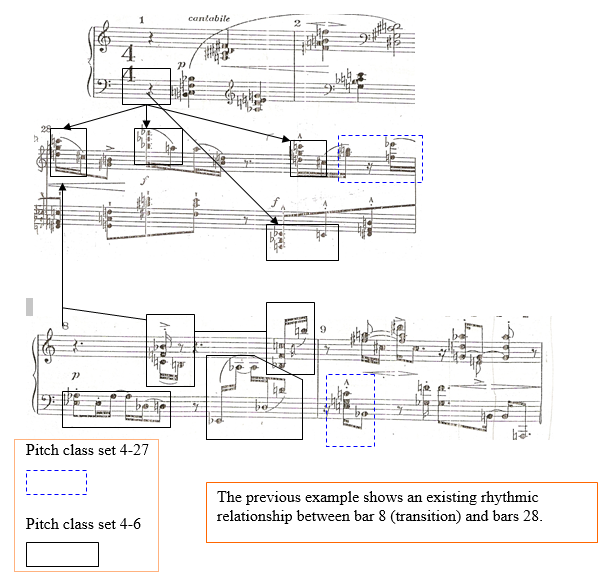
Another relationship, more distant, between rhythm, melody and the pitch class is the one that is detailed below:
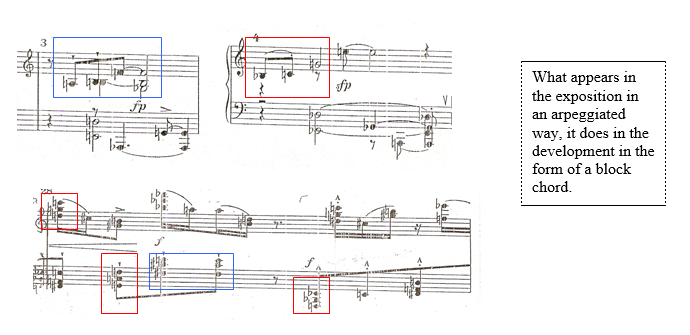
3-. Taking into account the different modes of the twelve-tone series, and their fragments (pitch-class set) as an equivalent of the tonal states that Zamacois mentions, the annexe details the pitch class set presentations (4-6; 4-27 and 4-Z15) framed in the different modes of the series with diverse rhythmic cells in the development.
4-. This happens clearly in measures 8 and 9 (transition to an A ‘) in the following bar, wherein the example of the previous point the rhythmic and pitch-class relationship between the two sections is detailed in the graphs.
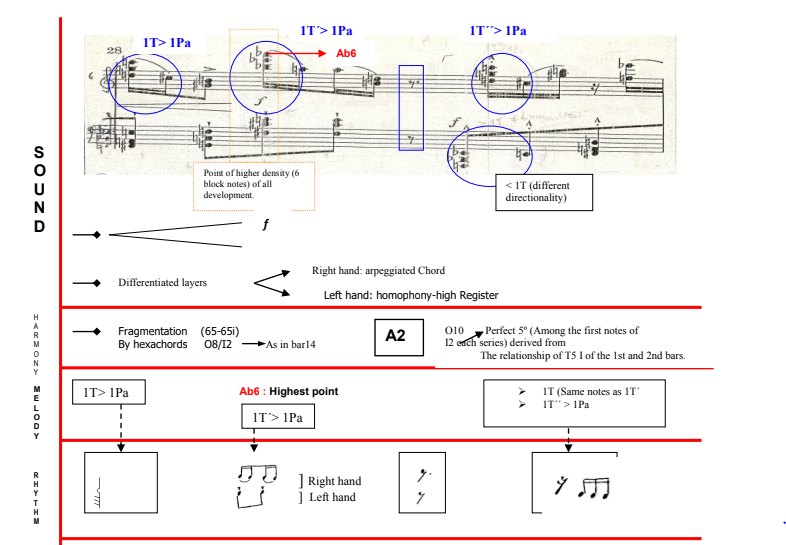
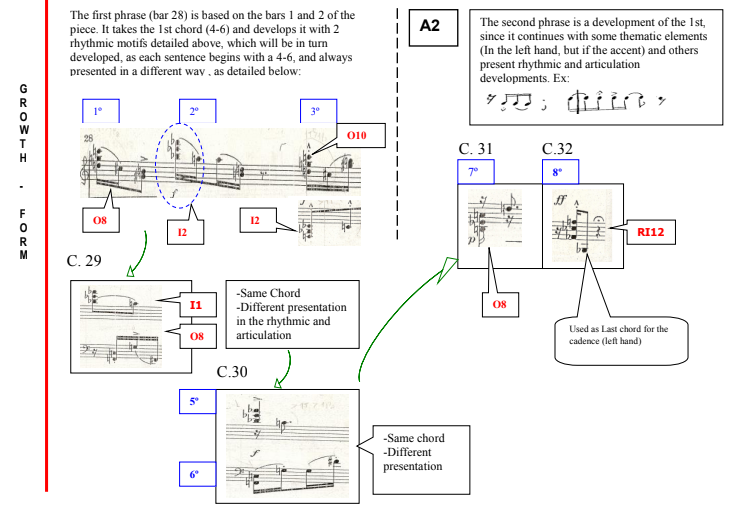
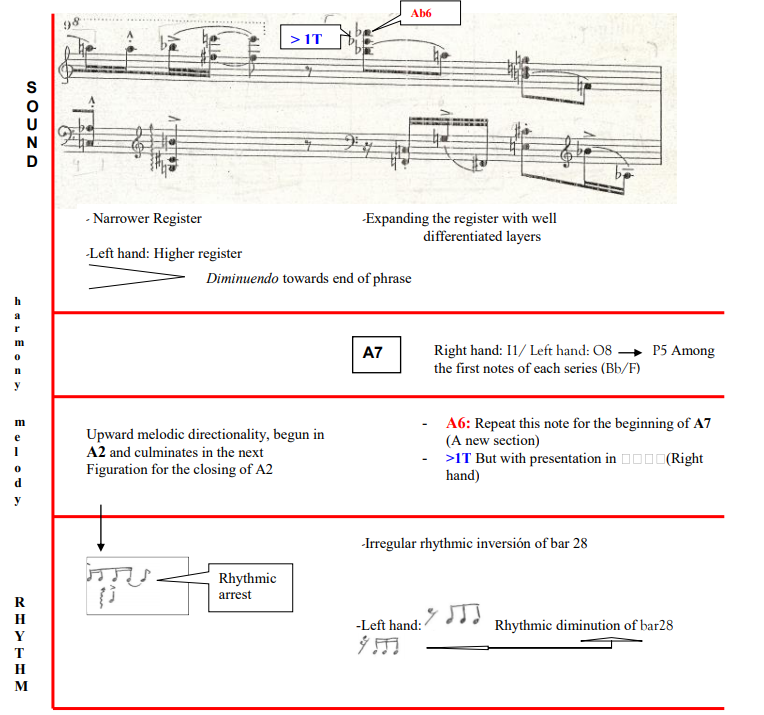
_____________________________
We will continue with the analysis on my next article, in which I reconciliate the Tonal areas given by Charles Rosen statements and Schonberg’s Piece.
You can now check here the Part II of this article to fully understand this fabulous Sonata.
#compositionlessonslondon #compositionlondon #musiclessonslondon #GiselaPaterno

